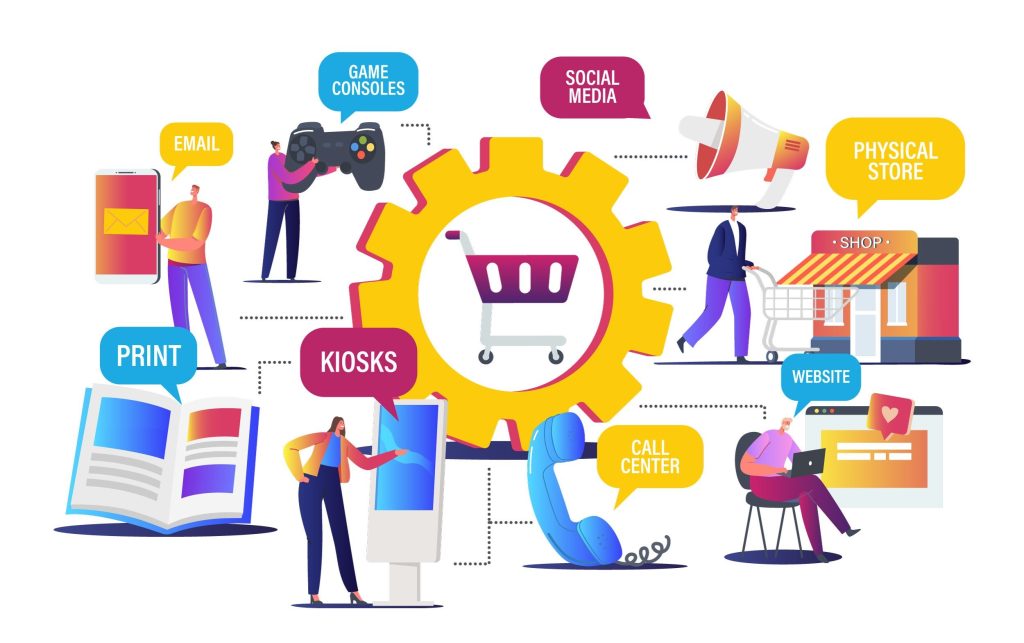Omnichannel Strategies in Retail are crucial for businesses who want to create seamless, consistent shopping experiences across multiple channels. Consumers expect a cohesive, personalized experience whether shopping online, in-store, or via a mobile app. Retailers that implement omnichannel strategies effectively can better meet these expectations, driving customer satisfaction and loyalty.
The Importance of Omnichannel Strategies in Retail
Omnichannel Strategies in Retail are essential for integrating various sales channels into a unified customer experience. This approach allows retailers to offer customers the flexibility to shop when, where, and how they prefer. By linking physical stores, e-commerce platforms, mobile apps, and social media channels, businesses can provide a more holistic shopping experience. This integration not only meets the needs of today’s consumers but also strengthens the retailer’s competitive position in the market.
In recent years, the retail landscape has shifted significantly, with more consumers adopting digital shopping habits. According to a 2024 report by McKinsey, over 80% of consumers use multiple channels to interact with retailers. This behavior highlights the importance of having a strong omnichannel presence. Retailers that fail to adapt may struggle to retain customers who now demand consistency across all touchpoints.
Moreover, omnichannel strategies enable retailers to collect valuable data from different customer interactions. This data can be used to personalize the shopping experience further, improving customer engagement and boosting sales. For example, a customer who browses a product online can receive targeted promotions through email or see related products when visiting a physical store. By leveraging this data, retailers can create a more tailored shopping experience that resonates with individual customers.
Key Components of Successful Omnichannel Strategies
To implement effective Omnichannel Strategies in Retail, businesses must focus on several key components. One of the most important aspects is ensuring consistency across all channels. Whether a customer is shopping online or in a brick-and-mortar store, the experience should feel cohesive and interconnected. This includes consistent branding, pricing, and product availability. Retailers should also ensure that customers can seamlessly transition between channels, such as starting a purchase online and completing it in-store.
Another critical component is inventory management. Accurate and real-time inventory tracking is essential for providing a seamless omnichannel experience. Customers expect to be able to check product availability online, reserve items for in-store pickup, or have products shipped directly to their homes. Retailers must have the infrastructure in place to support these demands, which often requires integrating inventory systems across all sales channels.
Technology plays a significant role in enabling omnichannel strategies. Advanced retail technologies, such as customer relationship management (CRM) systems and point-of-sale (POS) integrations, allow retailers to connect different channels and provide a unified experience. Additionally, artificial intelligence (AI) and machine learning can help retailers analyze customer data to deliver personalized recommendations and targeted marketing campaigns. These technologies are crucial for understanding customer preferences and anticipating their needs across various touchpoints.
The Benefits of Omnichannel Strategies in Retail
There are numerous benefits to implementing Omnichannel Strategies in Retail. One of the most significant advantages is increased customer satisfaction. When customers can interact with a brand across multiple channels seamlessly, they are more likely to have a positive shopping experience. This satisfaction often leads to increased customer loyalty, repeat purchases, and positive word-of-mouth referrals.
Omnichannel strategies also drive higher sales and revenue. By providing customers with more ways to shop and engage with the brand, retailers can capture a larger share of the market. For example, customers who shop both online and in-store tend to spend more than those who only shop through a single channel. Furthermore, omnichannel customers often make larger purchases and exhibit higher lifetime value compared to single-channel shoppers.
In addition to boosting sales, omnichannel strategies can improve operational efficiency. By integrating inventory management, customer service, and marketing efforts across all channels, retailers can streamline processes and reduce costs. For instance, offering in-store pickup for online orders can decrease shipping expenses and increase foot traffic to physical stores. This approach not only enhances the customer experience but also optimizes the retailer’s overall operations.
Challenges and Future Trends
Despite the clear benefits, implementing Omnichannel Strategies in Retail comes with challenges. One of the primary challenges is the need for substantial investment in technology and infrastructure. Retailers must have the right tools and systems in place to connect different channels and manage the increased complexity. Additionally, maintaining consistent branding and messaging across all channels can be difficult, especially for large retailers with multiple locations and online platforms.
Another challenge is the integration of data from various sources. Retailers must ensure that customer data collected from different channels is accurate, up-to-date, and accessible. This requires robust data management systems and a strong focus on data security and privacy. Retailers that can overcome these challenges will be better positioned to deliver a truly omnichannel experience.
Looking ahead, the future of omnichannel retail will likely involve even greater integration of physical and digital experiences. Technologies such as augmented reality (AR) and virtual reality (VR) are expected to play a more prominent role in enhancing the shopping experience. For example, customers may soon be able to try on clothes virtually before making a purchase or explore virtual showrooms from the comfort of their homes. As these technologies evolve, they will further blur the lines between online and offline shopping, creating new opportunities for retailers.
Conclusion
Omnichannel Strategies in Retail are essential for meeting the evolving needs of today’s consumers. By integrating various sales channels into a cohesive and seamless experience, retailers can enhance customer satisfaction, increase sales, and improve operational efficiency. While there are challenges to implementing these strategies, the potential rewards are significant. As the retail landscape continues to evolve, businesses that embrace omnichannel strategies will be better positioned to succeed in an increasingly competitive market.


